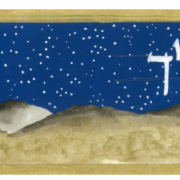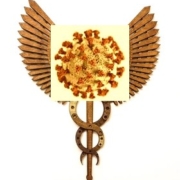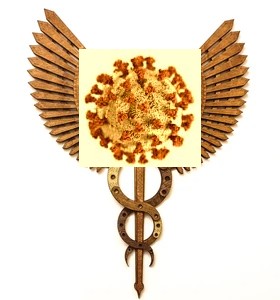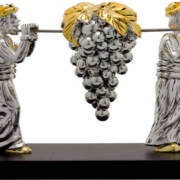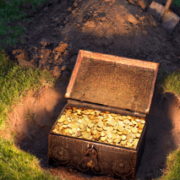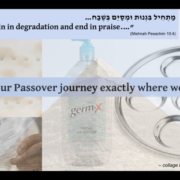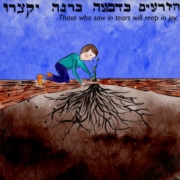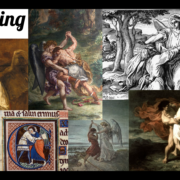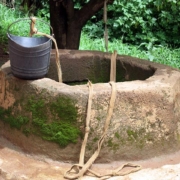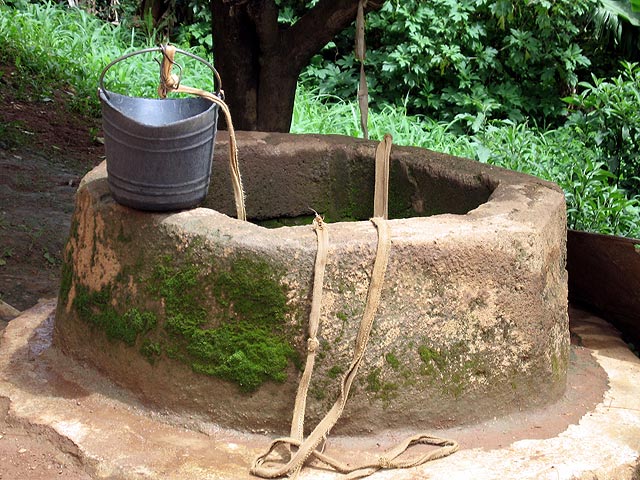
וַיֹּ֤אמֶר יְהֹוָה֙ אֶל־אַבְרָ֔ם לֶךְ־לְךָ֛ מֵאַרְצְךָ֥ וּמִמּֽוֹלַדְתְּךָ֖ וּמִבֵּ֣ית אָבִ֑יךָ אֶל־הָאָ֖רֶץ אֲשֶׁ֥ר אַרְאֶֽךָּ׃
Lech-lecha / go forth from your native land and from your father’s house to the land that I will show you. (Gen. 12:1)
לֶךְ־לְךָ֛ / Lech-lecha — can you hear the same sound twice there? That could be translated as “Go, really go!” Or we could translate it as, “Go from yourself,” or “Go for yourself.” In this verse, God is inviting Avram into a journey. It’s a journey of growing up: it’s time for him to leave his father’s house and become his own person. It’s a journey of discovery: figuring out who he is and who he’s going to become. It’s a literal journey of exploring new territory, and at the same time, an internal journey of becoming.
In this week’s Torah portion God and Avram enter into a brit, a covenant — a sacred agreement. God gives him a new name, Avraham, and promises that his descendants will be as numerous as the stars. God promises to be in relationship with Avraham and his descendants, always. God promises that though Avraham’s descendants will go down into Mitzrayim, God will lift us out of that Narrow Place. In return, Avraham gets instructions about mitzvot, commandments. Those are our part of the brit.
Toward the end of this week’s Torah portion, God says to Avraham,
הִתְהַלֵּ֥ךְ לְפָנַ֖י וֶהְיֵ֥ה תָמִֽים
Walk in My ways and be tamim. (Gen. 17:1)
The word תָמִֽים / tamim can be translated as blameless, or pure, or whole, or perfect. A few verses later God gives the mitzvah of brit milah, so a lot of commentators say that that mitzvah is how we become “perfect.” But Rashi (d. 1105) thinks God is saying, “walk in My ways and be wholehearted, even when life is difficult and you feel like I am testing you.” And Ramban (d.1270) points out that לְפָנַ֖י / l’fanai means, “before Me.” For him, the verse is God’s way of saying, “follow the path that I will show you.”
What does it mean to walk in God’s ways, or to follow God’s path? I think it means listening for that inner voice that says לֶךְ־לְךָ֛ / lech-lecha — go forth, always keep learning and growing, life is a journey. It means choosing a life of mitzvot, and doing our best to follow that path with all our hearts. This is what it means to be a Jew: we’re always learning and growing, we’re always going forth into something new. The mitzvot are our roadmap, our way of walking, and they’re our end of our covenant with God.
These two instructions are like bookends, and here’s the other thing I notice this year. At the start of the parsha, God says “Go forth to the place that I will show you.” In the beginning, God is showing us the way. God isn’t a person who has a body, but it’s as though God were walking in front of us. And at the end, God says הִתְהַלֵּ֥ךְ לְפָנַ֖י / hithalech l’fanai, “walk before Me” — now we’re taking the lead and God is our backup. God is letting us chart the course, and trusting us to know where and how to go.
This is what a good parent does. First, a good parent shows their child where to go and how to be. Here’s the the map, these are the instructions, this is how to keep your spiritual life flowing and how to be an ethical person in the world. And then, as the child matures and becomes ready to make informed choices, it’s the parent’s job to step back and let their kid lead the way. Not stepping too far back — still there to offer support or guidance — but giving the kid an opportunity to make choices and to shine.
This is the d’varling that Rabbi Rachel offered at CBI at Kabbalat Shabbat. (Cross-posted to Velveteen Rabbi.)

